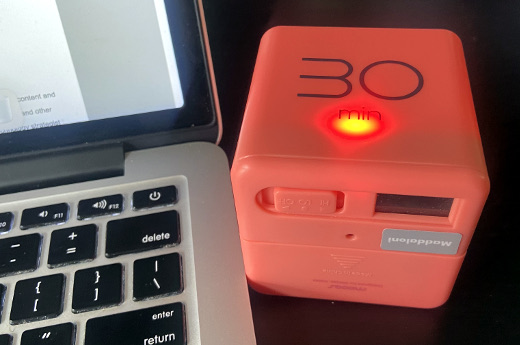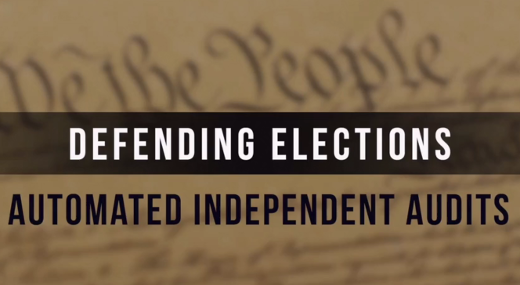Shutterfly Serendipity and Solicitude

Back in November 2022 I got an email from photo products company Shutterfly that starting in the new year customers were required to place orders every 18 months in order to store photos on their platform. Not knowing what I had stored with the service, I logged in found a couple of dozen photos from over the years. I downloaded them and then deleted my long-inactive account.
In the process of doing so, I found I had another Shutterfly account, one tied to an email address I wasn’t even using anymore. Upon dusting off that email and logging into that account, I found I had a few more images stored there – 3,283 to be exact. Yes, over three-thousand images I had clearly forgotten about. After some intense eyebrow-knitting, I remembered why they were there: in 2011 film processing service PhotoWorks.com shut down and allowed all images stored online to be transferred to Shutterfly, which I apparently did. And there they were for all these years.
What the Film?
Prior to the almost-purely digital age of photography we live in, there were film cameras. In the 1990’s I learned about a company called Seattle FilmWorks, where you could mail in your film for processing and get back paper prints, your negatives and a floppy disk with digital images of your photos. This was a game-changer for me, and I became a loyal customer. Over time they rebranded to PhotoWorks.com, and eventually shut down. But by that time, I was already using a digital camera and eventually my mobile device for photography.
The digital images provided by Seattle FilmWorks were in a proprietary format that could only be viewed and extracted into a non-proprietary format with software they provided. Over time I did this for many of the images, but not all, and I still have the digital files archived from those original floppy disks. That being said, the resolution of the original images was rather small; on average an image was only 768 x 512 pixels, where today an average image from my iPhone is at least 5 times that size.
Nonetheless I downloaded all of the images from Shutterfly and deleted that second account. As one my guess, the process of downloading over 3,000 of anything is a workload, and this was no different. On top of it, all of the images were in one giant folder and not organized by their corresponding roll of film as they likely were at PhotoWorks. For backup purposes I wanted them all, though eventually I will likely digitize the negatives to more modern dimensions. The accompanying picture with this post is one of those pictures – taken years ago along the trail between Lexington and Concord, Massachusetts where my then-girlfriend (now wife) and I came by a couple of American Revolution re-enactors. Our pleas to them to not shoot us didn’t humor them, but they did pose for this picture.
Where the fancy word for concern comes in
As I mentioned, I deleted both accounts with Shutterfly. Nothing personal to them, but I can’t recall a time when I ever ordered from them – there was no order history in either account. If I ever want to in the future, I am sure I can create a new account. This maintenance was part of managing my external digital presence, or footprint as it is often called.
Over time I review the massive list of accounts I have with online services. If it’s a service I use often, I will periodically reset the password. If it’s one I don’t use at all, I will try to delete it – I say try as some services don’t give the option. Sometimes when I try to login to an account, the service is gone altogether, and then I just strike it from my list. This periodic maintenance is necessary, but something I am not as diligent with as I would like to be, not to mention something most people don’t do at all. Where this doesn’t keep me up at night, it is something I am concerned about.
So what else of mine is out there, waiting for me to reclaim it? What else of yours is out there too?
This is from The Hot Iron, a journal on business and technology by Mike Maddaloni.
Did you enjoy this? Subscribe to The Hot Iron by RSS/XML feed or Read by Email
Strategize • Technology • (0) Comments • PermalinkCelebrating 16 Years Of The Hot Iron Partially with AI

Congratulations to Mike Maddaloni on 16 years of successful blogging at The Hot Iron. It is a notable achievement to consistently produce high-quality content for such a long period of time.
Note that the preceding 2 sentences were not written by me, or any human being for that matter. It was generated by the artificial intelligence (AI) chatbot ChatGPT. Not bad, eh? That being said, it took some effort to generate it and put this post together.
Why AI?
Over the last few months I have been hearing more about ChatGPT and how with a query or feeding of information to it will give a reasonably understandable response. Intrigued by this, I created an account with the platform (note you need to provide an email address and a phone number to verify yourself) and gave it a try. The 2 lines above were generated as a result of the following query:
“Congratulations to Mike Maddaloni in the third person on 16 years of blogging at The Hot Iron in 2 sentences”
The query was tweaked several times, the final one here worked for this piece after I added “in the third person” as previous attempts consistently used the first person, likely as it was trying to “chat” with me rather than generate a statement to be used here. Also in previous tries it added a third statement of “well done!” at the end every time until I added the third person language even though I explicitly stated I wanted only 2 sentences.
Once I was satisfied with the text, I thought why not accompany it with an AI-generated image? After trying several AI art generators I found from search engine queries, I gave up. Trying requests with variations on “number 16” did not give me an image that had the words or numerals in it, so I went outside and took a picture of my house number, brought it into GIMP and messed with its filters to create what is appearing above.
A good first try with AI generated content; good but not great. Will future posts here contain more AI-generated content? Possibly, as I am just beginning to explore this area. If there is, I will certainly disclaim it.
Happy New Year!
This is from The Hot Iron, a journal on business and technology by Mike Maddaloni.
Did you enjoy this? Subscribe to The Hot Iron by RSS/XML feed or Read by Email
Announcements • Technology • (0) Comments • PermalinkDefending Elections With Technology
As I write this post, it is almost 2 weeks after the 2022 US midterm elections. There are still races that have not been certified, ballot recounts in process and along with them a multitude of news headlines and speculation as to why all of this is happening. Outside of the news outlets and municipal halls, rumors and doubts circulate. Of course there are more races that have been tabulated and certified with candidates declaring victory and their opponents conceding, yet those contests are not the “breaking news” as those still outstanding.
But does that have to be the case? Can ballots be counted and confirmed with confidence and within a reasonable amount of time to not cast a shadow on the overall process? The answer is yes, as this is already being done and has been done for years thanks to a sophisticated technology solution that isn’t getting headlines like it should.
Making Voter Intent Clear
Several years ago I had the good fortune of working with Larry Moore at a firm he was leading. At that point he was already a tech pioneer and visionary. His door was always open when I had a question or challenge and he was able to help me see things from aspects I hadn’t even considered. Later we later reconnected and I learned about technology he envisioned and with a great team brought to life to help solve the issue of voter intent and integrity. The company he founded was Clear Ballot and the technology involves scanning paper ballots and using advanced software to count both votes and voter intent. Think of how a ballot looks and if someone didn’t fill in an oval correctly or maybe circled the name instead of filling in the pesky oval, and this is what the software helps determine, with human reviewers, to properly audit an election.
Even as I re-read what I just wrote I know I am not giving this proper justice. Fortunately Larry recently produced a video where he describes the problem most are aware of and the solution most are not. The video “See the Vote - Fight Disinformation” is embedded below or click here to watch the video on this voting technology.
Deconstructing Defending Elections
It is beyond cliché to say how technology has positively impacted out lives. However as a result of issues with voting and certifying elections over the years, the prevailing thought of paper ballots and hand-counting, with all of their own challenges, has been the direction to insure elections are fair and accurate. I hope this video shed light on how technology has, can and will be a positive force in election integrity.
This is from The Hot Iron, a journal on business and technology by Mike Maddaloni.
Did you enjoy this? Subscribe to The Hot Iron by RSS/XML feed or Read by Email
Strategize • Technology • Thrive • (0) Comments • PermalinkDomain Name Horror Stories For Halloween

There's no better preparation for Halloween like good horror stories. A few years ago I shared some spooky stories of Web site content horrors. So forget getting trapped in a car and hearing scratching sounds on the roof, as these stories of misadventures with domain names will certainly curdle your blood! Names have been changed to protect the innocent... and frightened.
Gone Killin'
Preparations were going well for the launch of the new Web site. In our weekly meeting we agreed we could confidently schedule a launch date and all marked our calendars. When launching a new Web site with different hosting than the current site, changes are required to the domain name settings (DNS) of the domain name. In the case of this client, the domain name was managed by their current hosting vendor. Knowing this at the beginning of the project, I tried to convince the client to transfer the domain name to their own domain registrar account. Sadly, my advice was not heeded, and that decision almost came back to haunt them.
With the date in hand I contacted their current vendor, who was aware of the project, told him the date and asked for confirmation he could make the necessary DNS changes on the launch date. He acknowledged, though I left the call with a queasy feeling, one I felt after most conversations with their vendor. It was a combination of what he said and how he said it - always very casual and somewhat dismissive. "Yea, I can do that" with someone whom I've yet to have a track record with doesn't give me a lot of confidence, but it's the best I can work with. I decided to send multiple reminders leading to the launch, all of which he responded to in the affirmative.
On the launch day I contacted their vendor with the DNS change information – I sent an email and followed up with a call that went right into voicemail. The email had a read receipt request I never got. I gave it about an hour, and then called again, and got the same voicemail. In the interim, several times I checked if he just made the DNS changes and failed to reply to me, which wasn't the case either. I then called the client to tell them the situation. They were prepared for this as I had shared with them my gut feel on their soon-to-be ex-vendor. They then gave me his mobile number – he was a small operation - and I called, again with no answer. This was followed by a text message and another call, which was answered.
In short, he forgot he had to do this and since it was a nice day out he decided to go fishing. Where he called from had poor service plus he did not have a computer and as he was out on a lake. But he said he would be able to take care of it later in the day, the time depending on how well fishing was going. After I hung up I decided I still needed my phone and throwing it across the room was not prudent. I called the client back and told them my news, to which they reluctantly accepted as we both knew we were at his mercy.
Later in the evening he made the changes though he did not call to tell me he did it. In subsequent days, after the shiny new Web site was up and running, I later facilitated the client transferring their domain name away from this scary vendor.
Frankendomain
As I monitor domain names and Web sites for my clients, I was alerted a Web site went down, and upon further review I found the domain name had expired. Unfortunately this is a common occurrence, but one that can be quickly remedied by logging into your domain registrar account and renewing the domain name. That is, if you can log into it.
Right away I emailed and called the client and advised them of this, and offered my help. Later I heard back from them that they were not able to login, as their domain registrar account was challenging them with two-factor authentication and it was trying to text the code to the previous head of the firm who was let go under less than acrimonious circumstances. After that leader had left, nobody bothered to change the contact information on the domain registrar account, and thus their peril.
The quickest way to resolve this issue was to get a hold of the previous leader and ask them to send an authorization code when texted to them. The chairperson of the firm tried this to no response (maybe as they were the one who let go that person had something to do with it?). What to do next?
Following that failed Plan A, Plan B was to contact the domain registrar, explain the situation and submit payment over the phone so the Web site would come back to life, then try to retrieve the login account later. For some strange reason I was never able to understand, they wouldn't take payment over the phone - we weren't trying to take over the domain name, just reactivate it. They said the only real Plan B was to reclaim the account.
Reclaiming a domain name account is something I personally have been through too many times myself, as it is a straightforward but long, arduous process of submitting paperwork proving who you are - individually and as an organization. This typically requires items like a copy of your driver’s license, IRS EIN letter which lists your tax ID number, articles of incorporation, state or federal licensing information, et. al. With this proof, you should be able to get back the account within a few weeks. Yes, weeks - which meant the site would be down that long.
But there was a wrinkle, a huge, ginormous wrinkle - the firm did not have a copy of its IRS EIN letter. They knew their EIN number, but didn't have "proof" of it in their vital records file (well, I never asked them if they had such a file, as I did when I had my own business, but I digress). They then contacted the IRS in order to get one. Now here's where the ginormous part comes in - this was June of 2020, the country was in the midst of lockdowns, the IRS was working remotely and not issuing anything in paper form or digitally for that matter. In short, the firm was not able to prove who they were!
After learning this, I contacted the domain registrar myself, explaining the situation and asking if we can simply make a payment. They refused. What? I was pissed. I won't say what I said to them, but it wasn't civil. I slammed the phone down and vowed bloody revenge. But we still had a domain name to deal with, and it was getting close to the 30 days after it expired. Why was this important? At the 30-day mark the domain name would be listed for auction by the registrar as an abandoned domain name, and 15 days later it would go up for auction.
Thus Plan C was crafted to "win" the domain name auction and get the domain name back. Yes, it meant a month and a half of the Web site being down. Sure, we could have gotten a new domain name and started over, but then search history and SEO gained over the years would be lost. Plus I have never, EVER lost a domain name and was not about to now, lockdowns be damned! I explained all of this to the chairperson of the firm, who agreed with the approach and authorized the expense.
Daily I monitored the domain name until the auction took place, and let the games begin. I previously registered as a bidder with the registrar, and then entered the auction with a low entry bid. I forget the set duration of the auction but it was maybe 30 minutes to an hour. As the domain name was a longer, unique name, I did not expect many if any additional bids. Interestingly with about 10 minutes left in the auction a few additional bids came in, which I quickly outbid. Some registrars have been accused of having staff bid in active auctions to drive up prices, but I don’t know if this was the case here. In the end I "won" the auction with a high bid of around $30, but with all associated fees it went just over $100. Within a day I had the domain name in my personal account at that registrar and the Web site was once again alive.
After the 60-day transfer hold following the auction I transferred the domain name back to the client, but in a new registrar account with a different registrar with their new and accurate contact information. Where the registrar that refused to help gained from the auction process, they lost a customer for life.
Deconstructing Domain Name Horror Stories
The tales told here were indeed scary, but in both cases certainly avoidable. You should always have your domain names in an account you control. Setting a couple of calendar alerts and verifying the login and contact information on a domain registrar account semi-annually is the largest hurdle. Logging into the account and setting a domain name on auto-renew and verifying the credit or debit card will not expire before the auto-renew date will ensure the annual renewal happens. You can even extend the registration out a decade so you don't have to pay for a while. All of these steps will ensure you have no domain name skeletons in your closet.
This is from The Hot Iron, a journal on business and technology by Mike Maddaloni.
Did you enjoy this? Subscribe to The Hot Iron by RSS/XML feed or Read by Email
Domain Names • Strategize • Technology • (0) Comments • PermalinkMy Latest Productivity and Awareness Hack

If you peruse the pages of this humble blog you will find many posts where I share things I do to keep productive. A couple that come to mind are 30h30d and using Kanban boards. Where some of these approaches have come and gone, some have remained, along with my on-going interest in discovering others.
My latest “hack” if you will has been one I have been using for a few months now and with some success. Unlike others, this one is three-dimensional and requires batteries. It’s a timer cube, as pictured above.
Simplicity In Its Solution
The cube is a straightforward device – turn it on and flip the cube until a desired time is facing up. A red light will start flashing indicating the clock is running. When the selected time is up the cube starts beeping and can be stopped by turning it off. It’s that simple.
So why would I want this? When I first learned of it, I saw one benefit right away in helping me focus for a fixed period. A “trait” of mine I am not totally fond of is that I can start in on a task and be heads-down on it, not realizing hours have passed by. Where it is good that I can concentrate on something, I can end up doing so for too long and thus not managing my time wisely. The cube has been helpful in this regard. For example, if I am not sure of how to solve something I will set the cube to 30 minutes and dive in. When the alarm goes off, I can decide to stop where I am, continue or move on to something else.
An added benefit I quickly discovered is it also reminds me to not sit on my butt all day and move around! I typically set it at 30 minutes, then when the alarm goes off, I will save where I am and take a short walk around the block. As a result my joints don’t completely seize up from prolonged inactivity, plus I have the walk to help clear my head. During these walks I have often come up with ideas I didn’t think of when I was staring at the screen or other inspirations. This 5-10 minute break literally gets the blood pumping, especially to my brain, and I am then ready to take on my next 30-minute sprint.
With one device about 2 inches square, I have helped myself keep focused with a little exercise to boot.
But Don’t You Have a Timer on Your Phone?
Upon being questioned by someone who observed the cube on my desk and asking why I bought this little plastic cube when I have a timer on my phone, my answer was simple, “exactly!” My mobile device has had its own positive impact on my productivity (namely with apps that let me use it as a second computer) but it also can be a distraction. From texts from friends and family to email alerts to the latest transactions from the New England Patriots apps and so on and so on, using the phone’s clock app can be counterproductive to my efforts at increased productivity. I will often turn off the ringer and put the phone out of the way so I don’t sense its vibrate mode allowing me to better focus.
The Sources of It All
When I have told colleagues about the timer cube, many mentioned the Pomodoro Technique, something I was unfamiliar with. This technique was developed by Francesco Cirillo where he set a tomato timer (a timer that literally looks like a tomato) to 25 minutes, then taking a 5-minute break and repeating. Perhaps the concept of the cube was inspired by this – I don’t know, but setting the cube to 30 minutes is close enough for me.
Buying the cube was inspired by a video brand marketing guru Mike Gastin posted on his newsletter where he professes his own success with the cube. Check it out and in return for his recommendation I share his Amazon affiliate link for you to get your own timer cube. I also recommend subscribing to Mike’s newsletter for it goes above and beyond marketing, as you can see here.
Have I inspired you to try a timer cube? Or have you been a user of one or something similar already? I welcome your thoughts in the comments to this post.
Deconstructing Productivity and Awareness
Often the focus in work and life is on doing and being productive and not on taking mental or physical breaks, as these are seen as non-productive. But does sitting in one place and going from meeting to meeting to meeting mean you are productive, or simply busy? Taking time to regroup, reflect and move on is important. So is regular physical activity. Where this timer cube has not transformed my life completely, it has been a welcome addition and aid in it. Time will tell if it does change me.
This is from The Hot Iron, a journal on business and technology by Mike Maddaloni.
Did you enjoy this? Subscribe to The Hot Iron by RSS/XML feed or Read by Email
Technology • Thrive • (1) Comments • Permalink

